Rachael R. Irving1, James L. Mills1, Eric G. Choo-Kang2 , Anthony Mullings3, Errol Y Morrison1, Rosemarie Wright-Pascoe4, Wayne Mclaughlin1 .
1 Department of Basic Medical Sciences, University of the West Indies,
Kingston, Jamaica.
2 Department of Pathology, University of the West Indies, Kingston, Jamaica.
3 Department of Gynaecology, Obstetrics and Child Health, University of
the West Indies, Kingston, Jamaica.
4 Department of Medicine, University of the West Indies, Kingston, Jamaica.
Abstract
Background : Many studies support a correlation between glycemic control and diabetes complications in patients with type 2 diabetes. Epidemiological analysis showed a continuum between risk of cardiovascular complications and glycemia, so that for each percentage point decrease in HbA1c there was a twenty five percent reduction in diabetes related death. Studies showed that persons affected by diabetes who understand the risk for, and implications of the complications of the disease are more likely to have better glycemic control and outcome.
Aim : To determine the levels of glycemic control in persons with early
onset autosomal dominant type 2 diabetes.
Methods : Eighty nine affected individuals from families with early onset autosomal dominant type 2 diabetes were assessed for levels of glycemic control. Glycemic control each three months, for a period of twelve months was monitored by HbA1c. Patient’s demographic and anthropometric data, adherence to treatment plan and attendance patterns at clinics were also assessed.
Results: The significant changes in mean HbA1c in the 89 affected individuals from baseline to 12 months followed a linear pattern ( 12.3± 1.2% at 0 month , 12.3±1.6% at 3 months, 12.0±1.0% at 6 months, 11.7±0.9% at 9 months, 11.4±1.7% at 12 months, p <0.005). There was no statistically significant difference in HbA1c from baseline to 12 months for the different patterns of adherence to treatment plan however those with excellent adherence to treatment had a steeper decreased in HbA1c from baseline to 12 months (excellent adherence: HbA1c decreased 1.9% over 12 months, poor adherence : HbA1c decreased 1.08 % over 12 months). There was no statistically significant difference in HbA1c between those with poor or moderate patterns of attendance at clinics however when the comparison was made between those with poor and excellent attendance, the statistical difference was significant (p<0.05). Patients with excellence attendance had the greatest decreased in HbA1c from baseline to 12 months (12.2±4.4% at baseline to 8.9±3.0% at 12 months, p <0.05).
Conclusion
Adherence to treatment plan and attendance at clinics enhance reduction in HbA1c.
Introduction
Early onset autosomal dominant type 2 is increasingly occurring in families of African descent (1). This type of diabetes is characterized by insulin resistance, dyslipidemia, and a high risk of long term complications (1-2). Early onset autosomal dominant type 2 is usually diagnosed in persons aged < 35 years(2) as compared to classical type 2 diabetes diagnosed in persons ≥ 45 years(3). Development of the disease at an earlier age increases the risk of duration dependent complications such as cardiovascular disease. In the United States of America type 2 diabetes contributes to more cases of adult-onset loss of vision, renal failure, and amputation than any other disease(4).
Glycemia, can be measured most reliably with the glycosylated hemoglobin assay (HbA1c). HbA1C value indicates glycemic control over a 2 to 3 months period; values less than 7% are considered optimal (7).There is substantial evidence that improving glycemic control decreases the risk of microvascular complications (5-6). Epidemiological analysis showed a continuous association between the risk of cardiovascular complications and glycemia, such that for every percentage point decrease in HbAlc (e.g., 9 to 8%), there was a 25% reduction in diabetes-related deaths, a 7% reduction in mortality rate, and an 18% reduction in combined fatal and non-fatal myocardial infarction (5,8). Tight glycemic control has been shown to prevent the onset or progression of diabetic nephropathy in type 2 diabetic patients (5-6 ).
Adherence to treatment plan which include dietary intake, proper blood pressure, lipid and glucose monitoring are fundamentals for proper glycemic control and reduction in risks of complications related to diabetes(8). In this study demographic and anthropometric data, treatment adherence and attendance patterns at clinics in relations to glycemic control over 12 months of 89 individuals with early onset autosomal dominant type 2 diabetes are presented.
To our knowledge this is one of the first investigations that evaluates glycemic control as it relates to adherence to treatment plan and clinic attendance in a homogenous population of persons with early onset autosomal type 2 diabetes
Statistics :
Data was analyzed by using SPSS 12.2 (SPSS Inc. in Chicago). Demographic variables were analyzed using Spearman’s correlation coefficient. Correlation regression was used to access multiple relationships. The associated t and ANOVA tests were done to test the statistical significance of the correlation coefficient and regression models reported.
Methods
Patients with early onset autosomal dominant type 2 diabetes were recruited for the study on glycemic control. General practitioners were asked to refer affected patients with a family history of early onset type 2 diabetes to the testing centre: the Department of Basic Medical Sciences, University of the West Indies, Mona, Jamaica. A total of 105 persons were recruited as they met the study's entry criteria (diagnosis of diabetes and 2 family members with early onset autosomal dominant type 2 diabetes (2)). Exclusion criteria were: ambulatory individual, current heart or kidney failure, blindness, a severe concurrent illness likely to limit life or require extensive systemic treatment, inadequate understanding or unwillingness to participate in the study.
A total of 105 patients attending public and private clinics in the Kingston Metropolitan area of Jamaica were recruited. The study was a longitudinal/cross-sectional one and was conducted at the Department of Basic Medical Sciences, Mona which forms part of the University of the West Indies Faculty of Medical Sciences. The study received ethical approval from the University of the West Indies Faculty of Medical Sciences/ University Hospital of the West Indies Ethics Committee (IRB).
At initial interview the study requirements were explained to the participant. A consulting physician ensured that the patient was well enough to participate in the study. After initial interviews 89 patients were selected for further participation in the study. Informed consent was obtained from each participant. Patients were asked from the first day of study to strictly adhere to all treatment plans recommended by their doctors and to keep all clinic appointments. Demographic data were obtained by interviews. Adherence to treatment plan and attendance at clinics were self reported and monitored by reviewing of the docket by a consulting physician. Adherence to treatment plan was defined as poor if patient adhered to ≤ 49% of treatment recommendations, moderate if patient adhered to 50-79% of treatment recommendations and excellent if patients adhered to 80% or more of treatment recommendation. Poor attendance at clinic was defined as attending clinic less than 50% of recommended time, moderate 50% to 79% of recommended time and excellent 80% or more of recommended time. Glycemic control starting at baseline was monitored by checking HbA1c at 3 months intervals up to 12 months. Body Mass Index (BMI) utilizing weight and height (weight/height – kg/m2 ) was measured by a standard stadiometer. Waist/hip circumference was done by measuring waist at the maximal circumference between the lower ribs and hip and measuring hip at the level of the maximal protrusion of the buttocks with a steel tape. Systolic and diastolic blood pressure measurements were obtained using a standard sphygmomanometer whilst the patient was seated. Hypertension was defined as a history of hypertension treatment or systolic pressure ≥ 140mmHg or diastolic pressure ≥ 90mmHg (9)
Results
Eighty nine patients were assessed for glycemic control at 3 months intervals starting at baseline for a period of 12 months. According to demographic data from table 1: The patients involved in the study were of African descent. Mean age of participants at time of study was 42± 15.6 years. Mean age at time of diagnosis was 31.9 ± 5.9 years. The duration of diabetes in the cohort at the time of the study ranged from 0 to 57 years. Sixty point seven percent of the study cohort was taking oral agents only, and the other 39.3% were taking insulin. Forty point four percent had known diabetes related complications (on diuretics for kidney problems/ lost some sensation in feet-neuropathy) and high blood pressure (systolic >130±6.5, diastolic > 90±4.8 mmHg). Total (5.4± 0.9mol/l) and LDL (3.4± 0.5 mmol/l)) cholesterol levels were elevated. BMI of these patients was 26.7±3.5kg/m2
Thirty six persons or 40.4% of the study cohort had household income of < $(US) 5000.00 yearly. Thirty six or 40.4% of the study cohort had < 5 years of formal education. Approximately 60% of the study cohort moderately or poorly adhered to their treatment regimens whilst 73.1% had moderate or poor attendance at clinics. Mean daily caloric intake of the study participants was 2500±45.0 k/cal.
Glycemic control :
General glycemic control (Table 1: All study participants)
At 3 months mean HbA1c was 12.3±1.6%, at 6 months 12.0 ±1.0%, 9 months 11.7±0.9% and the end of 12 months 11.4±1.7%. Mean fasting blood sugar was 11.1±2.8 mmmol/l at the beginning of the study. At the end of 12 months fasting blood sugar was 8.9 ±0.9 mmol/l.
Sub-groups based on attendance patterns at clinics (Table 2)
Patients with poor attendance at clinics had baseline HbA1c of 12.2±5.0, their
HbA1c decreased to 12.00 ± 3.9 at 3 months then remained at that level for 6 months, then decreased to 11.2 ±3.4 at 9 months and further decreased to 10.6±2.7 at 12 months. There was no statistically significant difference in HbA1c between any of the periods. Patients with moderate attendance at clinics had HbA1c of 11.8±4.5 at baseline then a decrease to 11.0±4.2 at 3 months, an increase to 11.1±3.6 at 6 months, a decrease to 10.8±3.8 at 9 months then a further reduction to 10.5±3.9 at 12 months. No statistically significant difference was noted between periods of assessment. Patients with excellent attendance at clinics had a constant decrease in HbA1 over 12 months moving from 12.2±4.4 at baseline to 8.9±2.9. A statistically significant difference was noted between baseline and 12 months (p<0.05)
Sub-groups based on adherence to treatment plan (Table 3)
Baseline and 3 months HbA1c were the same in patients with poor adherence to treatment plan. HbA1c then decreased steadily from 3 to 12 months. No statistical difference in HbA1c was noted between any three months period. Those patients with moderate adherence to treatment plan had an increase in HbA1c from baseline to 6 months then a decrease below baseline value at 9 and 12 months. Patients with excellent adherence to treatment plan had a linear decrease in HbA1c
over 12 months moving from 11.3± 4.7 at baseline to 10.2± 4.0 at 3 months to 10.0 ± 2.7 at 6 months then to 9.4± 3.7 at 9 months and finally to 9.4 ±3.8 at 12 months.
Glycemic control in specific subgroups based on years of formal education (Figure 1)
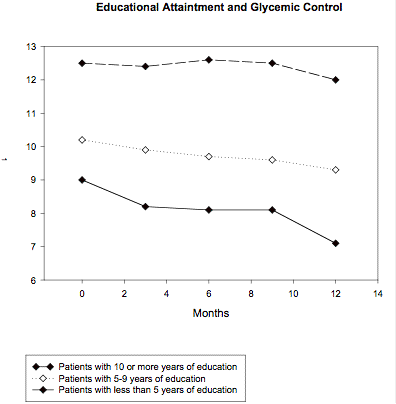
Figure 1. Measurements of Glycosylated Hemoglobin over 12 months
in early onset autosomal dominant type 2 diabetes patients with
different levels of education
HbA1c decreased significantly (9.0 ±1.0 % to 8.2 ± 0.8 %, p<0.05) during the first three months, then decreased non-significantly to 8.1 ±1.1% (p>0.05) by six months, remained steady at 8.1±1.1% between 6 and 9 months then decreased significantly (from 8.1±1.1 to 7.7±1.0 %(p<0.05) between 9 and 12 months in probands with ≥10 years of formal education.
In probands with 5 to 9 years of formal education HbA1c decreased non-significantly from 10±2.1% to 9.9±1.8% (p>0.05) during the first three months, then decreased non-significantly from 9.9±1.8 to 9.7±1.8% (p>0.05) during three to six months then further decreased non-significantly from 9.7±1.8 to 9.6±1.7% from six to nine months then decreased significantly from 9.6±1.7 to 9.3±1.0% (P<0.05) from nine to twelve months.
HbA1c decreased non-significantly from 12.5±1.1 to 12.4±2.4% (p>0.05) during the first three months, then increased non-significantly to 12.6±2.1% (p>0.05) by six months, decreased non-significantly from 12.6±2.1 to 12.5±1.9% (p>0.05) between 6 and 9 months then decreased significantly from 12.5±1.9% to 12.0 ±1.2% (p<0.05) between 9 and 12 months in probands with <5 years of formal education.
Glycemic control based on age (Figure 2)
In persons ≥ 50 years HbA1c non-significantly decreased from 12.2±3.1% at 0 month to 12.0±2.4 (p>0.05) at 3 months then rose significantly from 12.0±2.4% at 3 months to 12.9±3.9% (p<0.05)at the end of 12 months. In persons < 50 years HbA1c decreased significantly from 11.4±1.0% at 0 months to 10.9±1.9% (p<0.05) at three months then further decreased significantly to 10.2±1.4% (p<0.05) by 12 months.
Table 1: Baseline- characteristics of the study cohort
(n=89)
---------------------------------------------------------------------------------------------------
-------------------------------------------------------------------------------------------------
Mean age at time of study (years) 42± 15.6
Mean age at diagnosis (years) 31.9 ± 5.9
Duration range of diabetes (years) 0-57 years
On OHA 54 (60.7%)
On Insulin 35 (39.3%)
Known diabetes related complications 18 (20.2%)
High Blood Pressure (>130/90 mmHg) 18 (20.2%)
BMI (kg/m2 ) 26.7±3.5
Total Cholesterol (mmol/l) 5.4±0.9
HDL (mmol/l) 1.4±0.2
Triglyceride (mmol/l) 1.3±0.2
LDL (mmol/l) 3.4±0.5
FBS mmol/l 11.1±0.8
Insulin mU/l 16.2±4.9
Total kcal/day 2500±45.0
Hospitalization profile
Age ≥≥50 years 10 (11.2%)
Age < 50 years 3(3.3%)
HbA1c (%)
0 month (beginning of study) 12.3 ±1.2
3 months 12.3± 1.6
6 months 12.0 ±1.0
9 months 11.7 ±0.9
12 months 11.4±1.7
Ethnicity
Afro-Jamaican 89 (100%)
Annual Household income ($US)
<5000.00 36 (40.4%)
5-10000.00 36(40.4%)
$10,000.00 17(19.1%)
Education level of Subjects
< 5 years of formal education 36(40.4%)
5-9 years formal schooling 36(40.4%)
≥ 10 years formal schooling 17 (19.1%)
Adherence to treatment regimen
Excellent (80-100% compliance) 36(40.4%)
Moderate (79-50% compliance) 17(19.1%)
Poor (<50% compliance) 36(40.4%)
Scheduled attendance at clinics
Excellent (80-100% of time) 24( 26.7%)
Moderate (79-50% of time) 48 (53.3 %)
Poor (<50% of time) 17 (19.1%)
Table 2: Attendance at Clinics and 12 months Glycemic profile
Appointment keeping | Time ( Months) | ||||
0 | 3 | 6 | 9 | 12 | |
HbA1c | |||||
Poor | 12.2± 5.0 | 12.0±3.9 | 12.0±2.9 | 11.2±3.4 | 10.6±2.7 |
Moderate | 11.8±4.5 | 11.0±4.2 | 11. 0±3.6 | 10.8±3.8 | 10.5±3.9 |
Excellent | 12.2±4.4 | 10.6±3.9 | 10.5±3.1 | 9.7±3.3 | 8.9±2.9 |
Glycemic profile over 12 months of patients’ appointment keeping
pattern
Table 3 : Adherence to Treatment Plan and HBA1c over 12 months
Adherence to Treatment Plan | Time (months) | ||||
0 | 3 | 6 | 9 | 12 | |
HbA1c | |||||
Poor | 10.2±4.8 | 10.2±3.9 | 10.1±3.4 | 9.4±3.9 | 9.2±3.1 |
Moderate | 10.2±4.7 | 10.4±4.7 | 10.8±4.1 | 9.5±2.9 | 9.3±3.6 |
Excellent | 11.3±4.7 | 10.2±4.0 | 10.0±2.7 | 9.4±3.7 | 9.4±3.8 |
Patient’s adherence to their treatment plan and glycemic levels
from baseline to 12 months
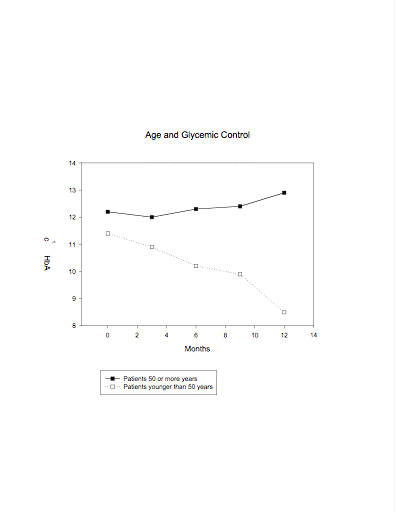
Figure 2: Measurements of Glycosylated Hemoglobin over 12 months
in early onset autosomal dominant type 2 diabetes patients based
on age
Discussion
In terms of demographic data of the entire cohort dyslipidemia (elevated total and LDL cholesterol), BMI above normal range, high blood pressure, long duration of disease and diabetes related complications were general features. These features complicate and prevent tight control of glycemia . In the studied population (n=89) there was a less than 1% point drop in HbA1c at the end of twelve months. At the beginning of 12 months HbA1c was 12.3% and at the end of 12 months 11.4%. When the cohort was divided into different subgroups, persons with ≥10 years of education had better glycemic control than persons with less education. Many studies have shown that, there are no correlation between educational level and glycemic control however Zgibor et al (10) has shown that specialist care was associated with a higher level of participation in diabetes self care practices and a lower HbA1c level. Care delivered by specialist has been associated with better glycemic control and delivery of practices measures that are more consistent with established practices guidelines (9,10). Zgibor and collegeues(10) have also shown that patients receiving specialist care are more likely to have an educational level beyond high school and annual income > (US) $20,000.00. The 20% of the cohort with ≥10 years of formal education had a greater than 1% drop in HbA1c level over a 12 months period, moving from 9.0% at baseline to 7.7% by the end of twelve months.
Glycemic control is the only measure proven to prevent diabetic microvascular and neuropathic complications (5,6). Unfortunately, 40.0 % of the study cohort had higher HbA1c levels at the end of 12 months than at the beginning of the study. The poor glycemic control may have been due to disease duration and poor self care. The disease duration of diabetes ranged from 0 to 57 years. Older people in the study tended to have the disease for longer periods. Of the cohort, the subgroup aged ≥ 50 years were the only group in which HbA1c was higher at the end of the study than at the beginning. HbA1c moved from 12.2% at baseline to12.9% at the end of 12 months. Blaum et al (11) found that disease duration and poor self-care were related to glycemic control. The patients ≥ 50 years had greater incidences of hospitalization (10 older persons versus 3 younger persons) due to diabetes related complications. The Kumamoto study (2000) confirmed that improved glucose control reduces the microvascular complications such as retinopathy, nephropathy, and neuropathy in type 2 diabetes (6). The poor glycemic control in these patients may have precipitated microvasular complications and lead to the increase incidences of hospitalization. In patients with type 2 diabetes prospective studies have shown an association between the degree of hyperglycaemia and increased risk of microvascular complications, sensory neuropathy, myocardial infarction stroke , macrovascular mortality, and all cause mortality(5-6,11)
Regression analysis done in this study identified five variables associated with poor glycemic control : education, use of insulin, duration of diabetes, age and attendance at clinics. Persons ≥50 years based on demographic data in this study tend to use insulin, had diabetes for a longer time, attended clinics less and were more likely to have <5 years of formal education. At the end of 12 months persons aged ≥ 50 years had poorer glycemic control with an increase in HbA1c
At 12 months.
While the race/ethnic population was homogeneous, the socioeconomic status of the population was not. Most of the patients had very low income, a few patients however had ≥ 10 years of formal education and earned > $10,000.00 per year which limits the generalization of the study results.
Finally, multiple factors affect glycemic control. The study did not incorporated disease severity, access/quality of care, self-care skills, exercise, psychological status, behavioral pattern and knowledge of the disease which might have had effect on glycemic control (4-7,10,11-12)
This study identified patients with early onset autosomal dominant type 2 diabetes that have poor glycemic control. The study also identified patients with this form of atypical diabetes that might be able to have optimal control. The findings should not be generalized to all patients with early onset Type 2 diabetes but can be applied to racial/ethnically homogeneous populations. In this study those who were older, had diabetes for a longer period of time, used insulin and had < 5 years of formal education had poorer glycemic control. The younger, better educated had better glycemic control and was closer to the optimal of < 7.0% (5,11). This study provides a useful methodology to assess disease management systems using longitudinal data. It does not provide answers to why patients are not optimally controlled but provides a beginning from which to investigate and address obstacles that might prevent patients with diabetes from having optimal glycemic control.
References
1 Rosenbloom A, Joe J, Young R, Winter W (1999). Emerging Epidemic
of type diabetes in youth. Diabetes care; 22(2):345-354
2 Doria A, Yang Y, Malecki M (1999). Phenotypic characteristics of early-onset
autosomal-dominant type 2 diabetes unlinked to known maturity-onset
diabetes on the young (MODY) genes. Diabetes Care; 22:253–26.
3 WHO. Diabetes Mellitus, Report of a WHO Study Group. Geneva,
World Health Org (Tech. Rep. Ser., no.727), 1985
4 Nathan D( ).Initial Management of Glycemia in Type 2 Diabetes
Mellitus. New Engl J Med.; 347:1342-1349
5Shichiri M, Ohkubo Y, Kishikawa H, Wake N (2000). Long-term results of the
Kumamoto study on optimal diabetes control in type 2 diabetic patients.
6 UK Prospective Diabetes Study (1998). Intensive blood-glucose control with
sulphonylureas or insulin compared with conventional treatment and risk of
complications in patients with type 2 diabetes (UKPDS 33). Lancet; 35
7 Devlin G, Timmis M, Balasubramaniam W, O'Neill W (2004).
Optimal glycemic control is associated with a lower rate of target vessel
Optimal glycemic control is associated with a lower rate of target vessel
revascularization in treated type II diabetic patients undergoing elective
percutaneous coronary intervention. Journal American College Cardiology;
43(1): 8 - 14.
8 Rhee MK, Slocum W, Ziemer DC,Culler SD,Cook CB, El-Kebbi IM,Gallina
DL,Barnes C, Phillips LS (2005). Patient adherence improves glycemic control.
Diabetes Educator ;31(2):240-50
9 Carretero OA, Oparil S (2000).Essential Hypertension : Definition and
Etiology.Circulation;101:329
10 Zgibor JC, Songer TJ, Kelsey SF, Weissfeld J, Drash AL, Becker D, Orchard
TJ (2000). The association of diabetes specialist care with health care practices
and glycemic control in patients with type 1 diabetes: a cross sectional analysis
from the Pittsburgh Epidemiology of Diabetes Complications Study. Diabetes
Care 23:472–47
11 Blaum CS, Velez L, Hiss RG, Halter JB. Characteristics related to poor glycemic control in NIDDM patients in community practice. Diabetes Care. 1997;20:7–11.
12 Anderson RJ, Clouse RE, Freedland KE, Lustman PJ (2001). The prevalence
of co-morbid depression in adults with diabetes: a meta-analysis. Diabetes
Care; 24:1069–1078.
Corresponding author: Rachael Irving, Department of Basic Medical Sciences, University of the West Indies, Mona, Kingston, Jamaica.
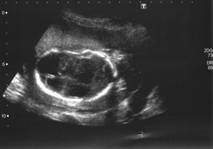
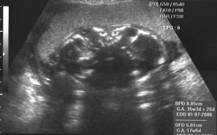
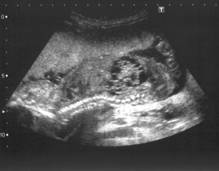 .
. 












